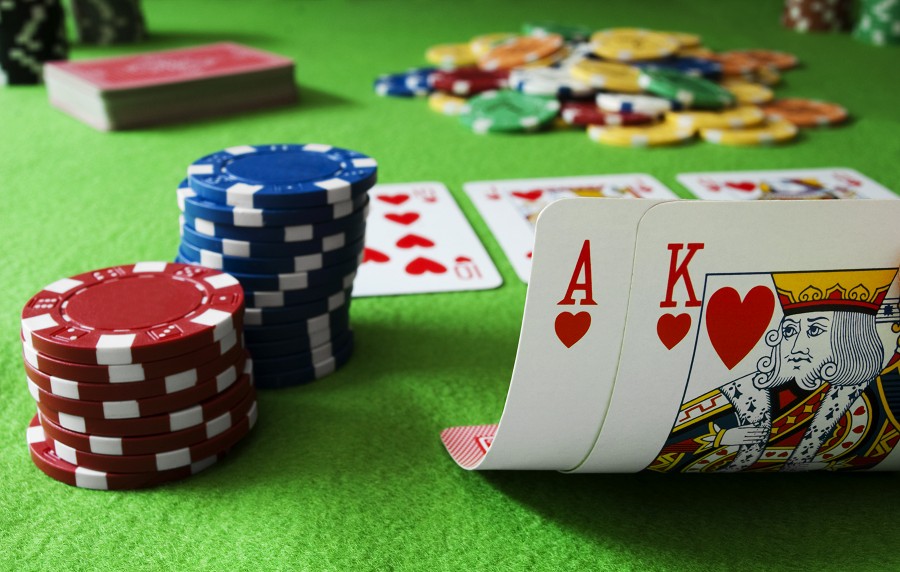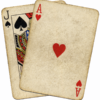One of the fascinating legends, or fairy tales, in the blackjack world, goes about Oliver Reinhart, a blackjack enthusiast who started a lifelong journey to master the game. He was a simple man with a complex ambition – to learn how to win at blackjack.

How to win at blackjack without counting cards
Oliver began with the basic strategy. It was about making decisions based on total player points and the dealer’s visible card. The concept was simple:
- Hit if you could improve your hand without risking a bust.
- Stand if you might bust.
- Double down if you had a high likelihood of winning.
- Split if it increased your winning odds.
It was a game of probability and statistics, a universal language Oliver learned to speak fluently.
Over time, he discovered a more advanced technique: card counting. This strategy entailed keeping track of high and low-value cards to predict future hands.
| Card strategy | 2 | 3 | 4 | 5 | 6 | 7 | 8 | 9 | 10, J, Q, K | A | Level of count |
|---|---|---|---|---|---|---|---|---|---|---|---|
| Hi-Lo | +1 | +1 | +1 | +1 | +1 | 0 | 0 | 0 | -1 | -1 | 1 |
| Hi-Opt I | 0 | +1 | +1 | +1 | +1 | 0 | 0 | 0 | -1 | 0 | 1 |
| Hi-Opt II | +1 | +1 | +2 | +2 | +1 | +1 | 0 | 0 | -2 | 0 | 2 |
| KO | +1 | +1 | +1 | +1 | +1 | +1 | 0 | 0 | -1 | -1 | 1 |
| Omega II | +1 | +1 | +2 | +2 | +2 | +1 | 0 | -1 | -2 | 0 | 2 |
| Red 7 | +1 | +1 | +1 | +1 | +1 | 0 or +1 | 0 | 0 | -1 | -1 | 1 |
| Halves | +0.5 | +1 | +1 | +1.5 | +1 | +0.5 | 0 | -0.5 | -1 | -1 | 3 |
| Zen Count | +1 | +1 | +2 | +2 | +2 | +1 | 0 | 0 | -2 | -1 | 2 |
| 10 Count | +1 | +1 | +1 | +1 | +1 | +1 | +1 | +1 | -2 | +1 | 2 |
Contrary to popular belief, it didn’t involve memorizing every card that was dealt, but rather it revolved around maintaining a running count and adjusting bets accordingly. However, Oliver soon realized this strategy was frowned upon in casinos and could even lead to being banned. As such, he decided to explore other techniques and learn how to win at blackjack without counting cards.
Shuffle Tracking
In his quest for the perfect strategy, Oliver moved on to Shuffle Tracking, an advanced technique that involves tracking card sequences through shuffles. This method required a sharp eye, a quick mind, and lots of practice. Oliver spent countless hours tirelessly perfecting this strategy, his determination never wavering.
Oliver was always looking for advanced strategies to enhance his gameplay, and that was when he stumbled upon Shuffle Tracking. It was a method typically used by more experienced blackjack players due to its complexity and the high level of skill and focus required.
Shuffle Tracking involves observing and remembering the location of certain cards or sequences of cards during the shuffle. The objective is to predict where those cards might end up in the new deck and then increase bets when those cards or sequences come into play.
The method originated from the principle that blackjack isn’t a completely random game. Since shuffling doesn’t perfectly randomize a deck, a deck shuffled after a round of play will be the same as its previous configuration. Skilled shuffle trackers can identify “rich” zones of the shuffled deck (areas where a higher concentration of valuable cards, like tens and aces, might be).
Here’s a detailed breakdown of how it works:
Zone tracking
The player divides the deck into multiple zones during the shuffle and mentally keeps track of the ones that seem rich in high-value cards. When the shuffle ends, these zones are likely to remain intact to some extent, allowing the player to estimate the location of the high-value cards.
Steering
This is when the player attempts to “steer” the rich zone into their hand. When the rich area approaches the top of the deck, the player increases their bets in anticipation of receiving high-value cards.
Ace sequencing
This is a more advanced form of shuffle tracking where the player identifies certain “key” cards likely to precede an Ace. By recognizing these key cards after a shuffle, the player can predict when an Ace will be dealt and increase their bets accordingly.
Cutting
Players can use the traditional ‘cut’ (where the dealer asks a player to cut the deck by inserting a plastic card) to their advantage. If they’ve been able to track the rich zone accurately, they could make a cut that brings high-value cards into play.
Despite the complexity of Shuffle Tracking, Oliver was determined to master it. He practiced tirelessly, sharpening his focus and enhancing his memory. His diligent work paid off, and he became adept at tracking the sequences and predicting where certain cards might land after a shuffle. Oliver’s newfound skill added another level to his blackjack prowess, moving him one step closer to mastering the game.
Hole Carding
Simultaneously, Oliver became fascinated with Hole Carding, which requires identifying the dealer’s face-down card when it’s not adequately protected. It required keen observation skills and subtlety. It was risky and challenging, but that made it all the more exciting for Oliver.
As Oliver’s journey continued, he encountered another intriguing strategy – Hole Carding. It was a technique that went beyond mere probability calculations; it required acute observation and a certain level of cunning.
Hole Carding is a method that seeks to take advantage of dealers who need to protect their hole card (the face-down card) adequately. If a player can catch a glimpse of this card, they gain an invaluable edge in the game as they’ll know two of the dealer’s cards instead of just one.
A few words on how Hole carding works.
Observation
The first step in Hole Carding is observing the dealer. The player must be keen enough to identify dealers who habitually reveal their whole card. It could be due to carelessness, insufficient training, or physical characteristics that make it hard to hide the card. Not all dealers are susceptible to Hole Carding; finding one who requires patience and keen observation is essential.
Positioning
Once a suitable dealer is identified, the player must secure the best seat to observe the hole card. It is typically the last position to the dealer’s right, which offers the best angle for viewing the card as the dealer slides it under the up card.
Discerning
The player must quickly and accurately discern the hole card’s value. Given that this is done in a fraction of a second, it requires exceptional focus and a sharp eye. Mistakes can lead to faulty assumptions and losses.
Adapting the strategy
With knowledge of the hole card, the player can adapt their plan for that hand. They’ll know precisely what they need to beat the dealer, allowing them to decide whether to hit, stand, split, or double down with more certainty.
Despite Hole Carding being a legally gray area, with risks of being caught and potentially barred from casinos, Oliver was fascinated by its ingenuity. It was a mental game within the game, a cat-and-mouse dynamic that added a thrilling layer to blackjack.
He practiced his observational skills, studied dealers, and honed his quick-thinking abilities. Eventually, he became adept at Hole Carding, significantly enhancing his chances of winning whenever the opportunity presented itself. This strategy became a potent weapon in Oliver’s arsenal, furthering his journey to becoming the ultimate blackjack master and in pursuit of how to win at blackjack every time.
Despite his growing mastery, Oliver knew that real-life and online games differed significantly. It compelled him to learn how to win at blackjack online, where physical strategies such as Shuffle Tracking and Hole Carding were useless. He had to rely purely on basic and advanced techniques and a proper understanding of the game’s rules and odds online.
As Oliver explored various strategies, he became acquainted with a widespread challenge in the blackjack community: how to win at blackjack with $100. It was a test of a player’s skill and discipline, as it required them to manage their bankroll effectively, knowing when to bet high and pull back. Oliver learned to play conservatively, making smaller bets to stretch his playtime and increase his chances of hitting a winning streak.
Epic moment
And then came the turning point of Oliver’s life. A grand online tournament was announced, which boasted a handsome prize and the chance to earn the title of the “Blackjack Master.” It was the opportunity Oliver had been waiting for. He registered, and with his arsenal of strategies and unwavering resolve, he was ready to compete.
Over days of intense competition, Oliver applied every strategy he had learned. He stuck to his basic strategy, managed his bets wisely, and precisely played each hand. But his most effective strategy was his mindset: he didn’t play to win every time; he played to maximize his overall wins. He knew that blackjack was not a sprint but a marathon.
In the end, Oliver’s persistence and dedication paid off. After years of mastering his skills and multiple strategies, he finally won the tournament. His victory was a testament to his belief that blackjack is not about winning every hand but about making the right decisions at the right moment. Oliver learned a valuable lesson – the quest of how to win at blackjack was about the right strategies and getting better, learning and playing with discipline. This is how Oliver Reinhart became the Blackjack Master.
Many novice players make one common mistake and try to win at blackjack every time they play. But Oliver’s example shows that winning at blackjack is more than trying to win every hand. It’s about making the right decisions.
After the tournament, Oliver didn’t just enjoy his success. He became the game’s mentor and started sharing his knowledge with players willing to learn. He wrote many articles, created an online course, and even gave live coaching sessions to guide others in blackjack. He taught them about strategies, the importance of discipline, money management, and emotional control.
In doing so, Oliver found a new purpose as fulfilling as his original quest to master the game. He revelled in the knowledge that his years of learning and strategizing could benefit others and that his passion for the game could ignite the same in others. It became a goal of his life.
Please also read: Blackjack Strategy Charts: Charts to Help you Win the Game!
References:
- “Card Counting Strategies”. Qfit.com. Archived from the original on 10 March 2013. Retrieved 10 March 2013.
- ^ Archer, John (1973). The Archer Method of Winning at 21. Henry Regnery Company. ISBN 0-87980-328-2.








